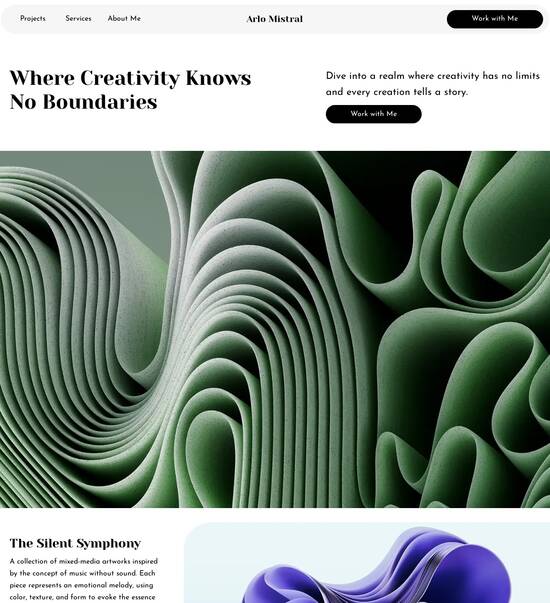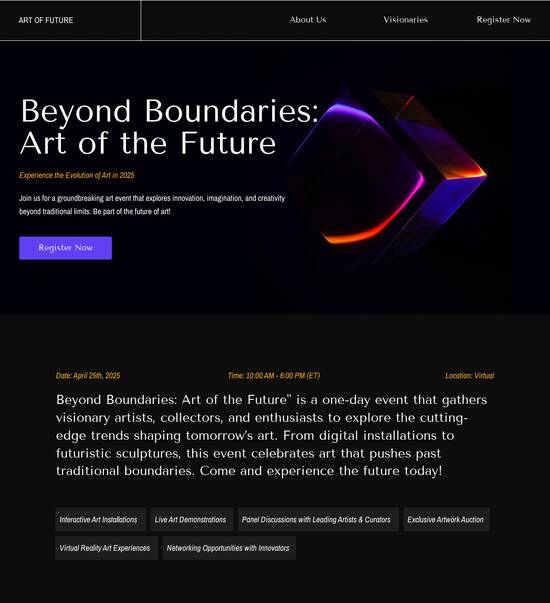
Order history page template optimized for Android phone
Explore Similar TemplatesAbout template
Design using a responsive order history page template that delivers a flawless experience on Android phone. Try Instapage today!
Recommended templates

Easy to build without coding
With the intuitive drag-and-drop builder, anyone on your team can create high-converting pages without any knowledge of code or design. Make enhancements to your landing page with custom widgets using Javascript, HTML/CSS, or third-party scripts.

Multiple layouts for any industry and goal
Select from 500+ landing page layouts built to boost conversions across industry-specific scenarios. Customize them by adjusting fonts, adding images, and generating on-brand content with the AI assistant. Quickly scale with Instablocks® and Global Blocks that you can save, reuse, and update globally.

Loads fast and looks polished on any device
Every template is responsive, which means they present professionally on any device and load blazingly fast with our Thor Render Engine. You can also power them up with Google AMP technology to deliver an unparalleled mobile experience and drive higher conversions.

Robust analytics & experimentation
Get real-time updates and reporting across all your devices, showing the number of visitors, conversions, cost-per-visitor, and cost-per-lead. Launch AI-powered experiments, run A/B tests, and use heatmaps to analyze user behavior, then optimize your landing page to maximize conversions.







Easy to build without coding
With the intuitive drag-and-drop builder, anyone on your team can create high-converting pages without any knowledge of code or design. Make enhancements to your landing page with custom widgets using Javascript, HTML/CSS, or third-party scripts.
Multiple layouts for any industry and goal
Select from 500+ landing page layouts built to boost conversions across industry-specific scenarios. Customize them by adjusting fonts, adding images, and generating on-brand content with the AI assistant. Quickly scale with Instablocks® and Global Blocks that you can save, reuse, and update globally.
Loads fast and looks polished on any device
Every template is responsive, which means they present professionally on any device and load blazingly fast with our Thor Render Engine.
Robust analytics & experimentation
Get real-time updates and reporting across all your devices, showing the number of visitors, conversions, cost-per-visitor, and cost-per-lead. Launch AI-powered experiments, run A/B tests, and use heatmaps to analyze user behavior, then optimize your landing page to maximize conversions.
All the features you need to build lead-generating landing pages
Explore more featuresLearn how to build top-performing landing pages for any goal
FAQs
Leading the way in building high-performing landing pages





An effective landing page and CRO platform, Instapage
When it comes to optimizing your landing pages for higher conversions, Instapage empowers marketers with unmatched tools. This step-by-step guide will walk you through the essentials of using Instapage's powerful features to elevate your digital marketing campaigns, specifically catered for departments like Marketing in varied sectors across the USA.
Key features of Instapage's landing page creation
Instapage offers a flexible platform designed for speed and efficiency. With over 100 high-converting templates and lead generation elements, marketers can launch effective landing pages without needing a developer. The intuitive builders allow for seamless page creation tailorable to your campaigns.
- Wide selection of landing page templates: Choose from various styles designed for different industries, ensuring your page resonates with your target audience.
- Pre-built lead generation elements: Add forms, buttons, and other crucial features that help in capturing leads quickly and effortlessly.
- Effortless page customization: Use simple drag-and-drop tools to personalize your messages, making it relevant to the audiences you’re targeting.
Step-by-step guide to optimizing landing pages
To maximize your ROI, consider these crucial steps for optimizing your landing pages effectively. Focus on testing, analyzing, and improving performance continually.
- Utilize A/B testing: Experiment with different headlines, images, and calls-to-action to see what resonates best with your visitors.
- Implement heatmaps for behavioral analysis: Gain insights into how users interact with your pages to refine your strategy.
- Analyze performance metrics: Use analytics dashboards to track conversions and adjust your landing pages based on data-driven insights.
Leveraging personalization for better engagement
Tailoring content to uniquely fit different audience segments can significantly enhance engagement and conversion rates.
- Dynamic text replacement: Automatically customize text on your pages to align with the ads clicked or the search terms used, creating a seamless experience.
- AdMaps integration: Align your ads with specific landing pages effortlessly to ensure those who click through receive coherent and targeted content.
- Audience segmentation tracking: Monitor how different segments interact with your page to better adjust your marketing strategies.
In conclusion, using Instapage effectively involves understanding its features, implementing strategic optimizations, and fostering personalized experiences for your users.
Ready to elevate your digital marketing with Instapage? Start creating impactful landing pages today to drive growth and achieve higher conversion rates!
Understanding the Order History Page: A Template Tailored for Android Users
The importance of an optimized order history page
An optimized order history page is essential in the evolving landscape of e-commerce. As customers increasingly rely on mobile devices for their shopping needs, businesses must address this shift by ensuring that their platforms meet user demands effectively. With just a few taps, users expect access to their previous orders, tracking updates, and seamless navigation. By creating an optimized view for Android users, businesses can enhance user engagement and satisfaction.
Moreover, a mobile-friendly design plays a pivotal role in achieving this goal. Research indicates that over half of all online shopping is conducted via mobile devices. Therefore, businesses that prioritize a streamlined order history page for Android users can significantly improve their user experiences. When users can track their orders easily, it fosters brand loyalty and encourages repeat purchases.
Improved accessibility ensures users can track their orders anytime.
A tailored experience can lead to increased customer satisfaction.
Efficient designs cut down the time taken for users to access information.
The interaction of customers with their order history is critical to understanding their shopping behavior. By analyzing these patterns, businesses can better cater to their needs. As mobile commerce continues to grow, developing an order history page that is specifically optimized for Android users is paramount.
Key features of an Android-optimized order history page
When designing an order history page for Android devices, several key features must be prioritized. First and foremost is responsive design. An effective layout adapts to various screen sizes, ensuring that all information is clearly visible without forcing users to zoom in. This adaptability enhances user interaction and satisfaction.
Quick access to order details is another critical aspect. Simplifying navigation so that users can view their recent orders with minimal effort leads to a more user-friendly experience. Displaying critical data such as order summaries, dates, statuses, and billing information is foundational. Users should also be able to search for past orders effortlessly, providing them with a fluid experience.
Responsive design for compatibility with various Android screen sizes.
Quick access to recent orders for easy navigation.
Critical data presentation, including order summaries and statuses.
User-friendly search functionality for streamlined order tracking.
By incorporating these features, an order history page can significantly enhance the Android user experience and facilitate better engagement with the brand.
Innovative layouts and visual designs
The layout of an order history page can significantly influence user satisfaction. Two common approaches are grid and list views, each with its own set of advantages. A grid view can be visually appealing and allows for a more compact display of information, while a list view offers clarity and straightforward navigation, which may be preferred by users seeking quick access to details.
Incorporating icons and illustrations can guide users through their order history effectively. Icons can help to denote different statuses, such as shipped, delivered, or pending, while visual representations of products can maintain customer engagement and create a connection between the user and their past orders. This facilitates a smoother interaction with the order history page.
Grid view for compact information display, enhancing visual appeal.
List view for clarity and quick navigation access.
Use of icons for instant recognition of order statuses.
Visual representation of products to encourage customer connection.
Selecting appropriate color schemes and typography enhances readability, especially on smaller screens. Designers should prioritize contrast and font sizes that accommodate users with varying levels of vision, ensuring that important information is not overlooked.
Integrating advanced technologies
The integration of advanced technologies can significantly enhance the functionality of an order history page. Utilizing APIs for real-time order updates ensures that customers have the most accurate information available at their fingertips. This eliminates confusion and fosters trust between the customer and the brand, as they are kept informed about their order's status.
Security is another crucial element. Implementing secure server connections helps protect customer data. Given the increasing concerns around data privacy, a commitment to securely managing customer information builds brand loyalty and confidence, further encouraging users to interact with their order history. Additionally, leveraging cloud storage increases data accessibility, allowing users to retrieve their order history from multiple devices seamlessly.
Real-time order updates via API integration.
Secure server connections to protect customer data.
Cloud storage to enhance data accessibility across devices.
Emphasizing these technologies makes the order history page more robust and promotes a secure, user-friendly experience that accommodates mobile users.
Interactive features enhancing user engagement
Incorporating interactive features on an order history page can significantly enhance user engagement. Product previews, for instance, can create a nostalgic connection for users, allowing them to view items they previously purchased. This not only serves as a visual reminder but can also stimulate future purchasing behavior.
Adding Q&A sections addressing common customer inquiries can further improve engagement. This could include frequently asked questions about order tracking, returns, and reordering, which provide immediate answers without having to leave the page. In tandem with this, maintaining a robust FAQ database can ensure that all user queries are addressed efficiently.
Product previews to enhance nostalgia and connection.
Q&A sections for instant answers to customer queries.
Robust FAQ databases for further user assistance.
Community feedback mechanisms for ongoing feature development.
Incorporating community feedback mechanisms can provide valuable insights into user preferences, facilitating continuous improvement of the order history page functionalities, ensuring it remains relevant to users.
Dynamic content personalization
Personalization is key in today's competitive e-commerce landscape. By adapting content based on user behavior and location, businesses can create more relevant experiences for their customers. For example, showcasing items similar to previous purchases or highlighting discounts may encourage users to explore more products.
Furthermore, integrating loyalty programs within the order history page can drive customer retention. By readily displaying earned points or exclusive rewards, users are encouraged to engage more with the platform, leading to potential increases in future sales.
Content adaptation based on user behavior and location.
Recommendations based on past orders.
Highlighting loyalty programs and incentives.
By leveraging user data, businesses can generate personalized experiences that not only meet customer needs but also drive sales and create lasting loyalty.
Understanding the role of customer support in order management
Effective customer support is an indispensable part of managing the order history page. Integrating chat functionality enables customers to receive real-time assistance. This immediate response capability can enhance customer satisfaction as queries related to order history can be addressed promptly.
Organizing teams to handle customer inquiries effectively can further boost the support experience. Providing a dedicated team for order history-related support ensures that users are met with knowledgeable personnel who can assist them. Access to helpful resources adds another layer of support, giving users confidence in navigating their order history.
Real-time chat functionality for customer support.
Dedicated teams for handling order history inquiries.
Access to resources for assisting users effectively.
By integrating these elements, businesses can create a supportive ecosystem around order management that further enhances the user experience.
Performance metrics: measuring success and optimizations
To ensure an order history page is working effectively, businesses must focus on performance metrics. Analyzing user interactions through heatmaps and click tracking can reveal where users are spending their time and which features are most commonly accessed. This understanding allows for informed adjustments to be made, improving overall user experience.
A/B testing is a valuable technique for refining layouts and features. By experimenting with different design elements, such as button placements or color choices, businesses can assess how these changes impact user behavior and satisfaction. Additionally, gathering feedback through surveys offers direct insights into customer satisfaction levels, aiding ongoing optimizations.
Analyzing user interactions through heatmaps.
Conducting A/B tests for layout and feature refinements.
Gathering feedback through surveys for satisfaction measurements.
By focusing on these performance metrics, businesses can continuously refine the order history page to meet user expectations and needs more effectively.
The future of order history pages in mobile commerce
Mobile commerce is rapidly evolving, and order history pages must adapt to future trends. Predictive analytics offers exciting possibilities for enhancing order tracking. By leveraging sophisticated algorithms, businesses can anticipate customer needs and provide timely updates about their orders, enhancing the overall experience.
Additionally, as hardware and software advancements progress, the capabilities of mobile devices will expand. This means that order history pages can incorporate more features, such as augmented reality for product previews, providing a truly immersive experience for users. It’s crucial for businesses to remain agile and accommodate these technological shifts.
Utilization of predictive analytics for order tracking enhancement.
Anticipating customer needs for timely updates and support.
Incorporating new mobile device capabilities for richer experiences.
By preparing for these advancements, businesses can ensure their order history pages remain competitive in an ever-evolving industry.
Best practices for developers and designers
For developers and designers, several best practices can enhance the effectiveness of an order history page. Collaboration across cross-functional teams is key; designers should work closely with developers to ensure usability and functionality align with user needs. Frequent communication allows the team to respond swiftly to challenges and changes in user preferences.
Employing iterative design approaches can also prove beneficial. Utilizing beta testing can lead to valuable insights from real users, helping to reshape the design before launch. Furthermore, emphasizing accessibility ensures that the order history page can cater to users with different needs, creating a more inclusive shopping experience.
Collaboration with cross-functional teams for improved design.
Iterative design approaches using beta testing insights.
Emphasizing accessibility to create an inclusive experience.
By adopting these best practices, teams can ensure that the order history page meets customers' evolving needs and expectations.
Practical application and case studies
Several businesses across various industries have successfully implemented optimized order history pages that cater to their mobile users. These applications often include real-time tracking, user-friendly interfaces, and integration with customer support functionalities. For instance, retailers have observed increased customer satisfaction and retention rates after upgrading their order management systems.
Customer stories illuminate the tangible benefits experienced when utilizing optimized order history pages. Many users report feeling more connected to their previous purchases due to the ease of access to order information and the accompanying visuals. Success stories reveal how strategic changes to the order history page can lead to improved customer loyalty and repeat business.
Examples of successful implementations in various industries.
Customer stories highlighting real-world benefits.
Innovative changes adapted post-launch based on feedback.
These case studies serve as powerful reminders that an optimized order history page can directly influence customer engagement and satisfaction.
Exploring the broader community impact
As mobile shopping communities continue to form and thrive, businesses must recognize the importance of user input in developing features for their order history pages. Engaging with communities can inform businesses about user preferences, allowing them to create functionalities that genuinely serve their customer base. Supporting community-driven initiatives can better align features with customer needs, leading to greater customer loyalty.
Furthermore, building a collective understanding of user needs through data analysis can significantly inform design choices. By analyzing collective user behavior and feedback, businesses can anticipate trends and adapt their order history functionality to meet evolving consumer expectations.
Understanding community trends in mobile shopping.
Engaging community input for feature development.
Utilizing data analysis to anticipate user needs and trends.
By fostering a community-centric approach, businesses can enhance their offerings and ensure they remain relevant and user-focused.
Ready to skyrocket conversions?
Supercharge your ad campaigns with high-performing landing pages
Get started














